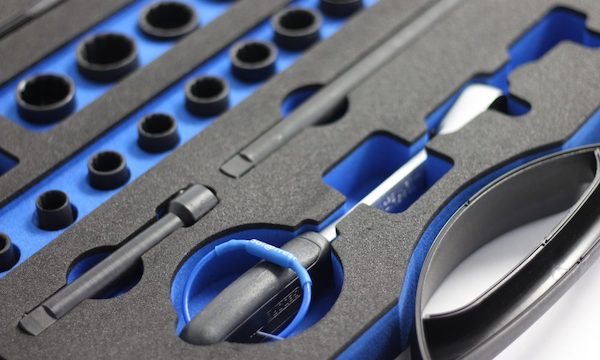The DOs & DON’Ts of Tool Tethering

Did you know that dropped objects rank in the top 3 of the deadliest workplace accidents in the UK, according to the latest statistics from HSE’s Riddor Report 2017/18? Falling objects also accounted for over 7,000 reported non-fatal injuries, with 75% of them resulting in over 7 days of lost work time each (2016/17).
Here at Tool@rrest we’re working hard to make the best tool tethering technology widely available and put a stop to the fatalities, injuries, site damage and project downtime caused by dropped tools.
In today’s blog, we’re taking a look at what you need to do (and not do!) to ensure optimum safety and efficiency when using tool tethering systems.
Tool Tethers
DO’s
- ALWAYS use a Certified and Rated Tether that is
suitable for the weight of the Tool. - ALWAYS ensure the tether is fitted by a
competent professional. - ALWAYS Verify the integrity of a tether prior to
use looking for indications of excessive wear and tear or fatigue. (If in
question, replace the tether).
DON’Ts
- DON’T use a homemade tether.
- DON’T use a tether that has not been fitted by a
competent professional. - DON’T use a tether that is not certified and
tested for the tool weight. - DON’T tether a tool that exceeds 2.5 kg to a
person. - DON’T use a tether exhibiting deformities,
unusual wear or deterioration. This must be immediately discarded and replaced
before using the tool.
Lanyards
DOs
- ALWAYS use a lanyard that is tested and rated
for the tool weight. - ALWAYS inspect your lanyard prior to use looking
for indications of excessive wear, failed stitching and ensure Karabiners are
in good clean working order. (If in question, replace the lanyard.) - ALWAYS weigh tools so that a properly rated
lanyard is used for the application (never assume the weight of a tool just by
feel). - ALWAYS ensure the lanyard at full extension drop
will not impact with workers below you. - ALWAYS verify the tool’s attachment point to
ensure that it is strong enough to hold the tool for the full drop distance of
the lanyard. - ALWAYS anchor all tools weighing more than 2.5
kg to a secure, fixed and rated anchor point, never to a person. - ALWAYS use a quick-change lanyard when a group
of small tools are being used. - ALWAYS use a retractable lanyard where there is
risk entanglement or snagging and multiple tools are being used. - ALWAYS use lanyards that have very low stretch
force at full extension so long as they have the correct degree of recoil for
the tool and application. - ALWAYS transfer shock loads from a person to a
rated structure whenever possible. - ALWAYS ensure the weight of the tools attached
to the body does not overload and exceed the weight limit of the harness.
DON’Ts
- DON’T ever use a tool lanyard with lower weight
limits than the tool being tethered. - DON’T tether a tool to a person without
verifying the impact on the persons “Personal Fall Protection” (PFP) devices. - DON’T attach a lanyard to a structure without
verifying the strength and shock-load capability of the anchor point. - DON’T use lanyards that require excessive force
for full extension. (This will cause increase muscle fatigue.) - DON’T modify the tool lanyard in anyway
(replacement of tool lanyard components such as Karabiners, clips will change
the load rating). - DON’T connect more than one Tool Lanyard
together. - DON’T customize the tool lanyard with hardware
that does not have the appropriate load ratings for the tool. - DON’T assume that a tool tether is a fool proof
device. - DON’T use a tool lanyard as a Personal Fall
Protection (PFP) lanyard. - DON’T use tool lanyards to the body in
situations where machinery entanglement is a concern, most tool tethers will
not breakaway against the weight of a person.
Remember, if in doubt, always check with a qualified safety professional before proceeding. If you’d like to discuss your tool tethering requirements, please get in touch with the Tool@rrest team or call: +44 (0) 1952 292 782.
Tool@rrest – The Drop Stops Here.